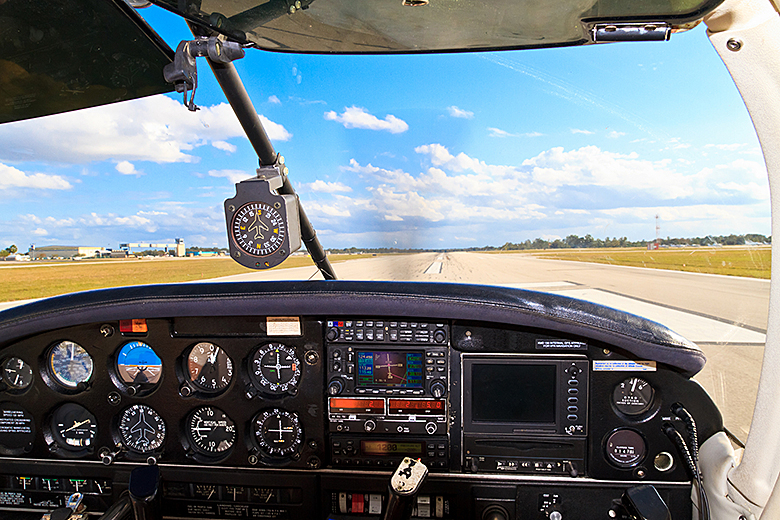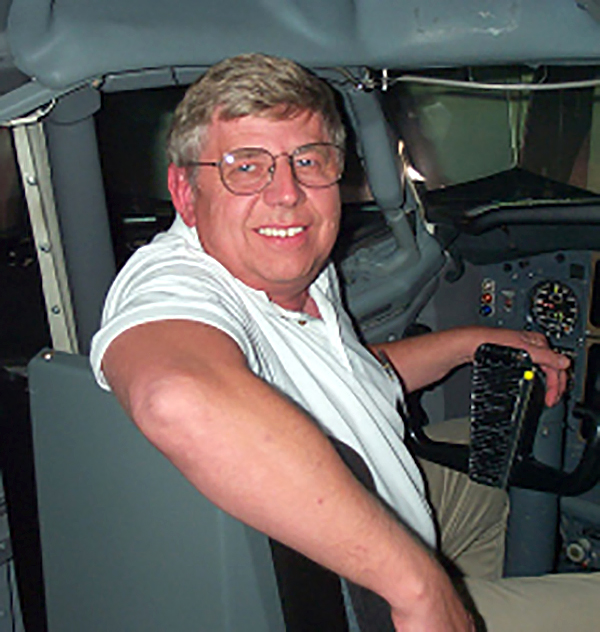What Is It Doing Now?
By Michael J. “Mick” Kaufman
Over the last several years, there have been many avionics upgrades. As a result, the avionics shops are six months to a year behind with scheduled work and updates. However, when the update is done, does it work “WRIGHT,” as in those brothers that started all this airplane stuff? Many of the avionics shops do not have a pilot on hand to test the install to see if it works correctly, so they tell the customer to read the book.
As an instructor who likes challenges, I get calls from pilots wanting training in their new equipment and, being a bit of a geek, I usually accept the challenge. It is amazing as to what I have found, especially, if the equipment is a mix of some old and some new and not all from the same manufacturer.
It is frustrating for many pilots who try to learn the new equipment on their own and no longer have confidence to trust themselves or their airplane. Then they end up selling it. Many think that they are no longer capable pilots when, in fact, there was a problem with the installation.
One pilot came to me several years after getting an update for some training, and I found an installation error. This was one of those slip-out and slip-in updates, removing a Garmin box and sliding in an Avidyne box. Sometimes, it would capture a glideslope on a GPS approach —sometimes, it would not.

After several hours and many attempts on the same approach, it became apparent that when and where we activated the approach determined the results. This was determined to be an installation error and the conclusion was that the approach needed to be activated between the initial approach fix and final approach fix to achieve glideslope capture. If it was activated before the initial approach fix, it required activating a second time after crossing the initial approach fix. If an altitude preselect was initiated at any time during the flight, it was necessary to disconnect the autopilot and re-engage it in order to get glideslope capture.
Another very recent case was glideslope capture on GPS approaches, but not on ILS approaches. I needed help to figure out that one and the Godfather of Avionics, our own Bill Hale, helped diagnose that one.
I recently had a visit with our FAA safety program manager from the Milwaukee FISDO, Jurg Grossenbacher. We discussed the rash of fatal accidents and where in the spectrum they originated. The culprit? People flying airplanes with which they are not totally familiar.
Many of those accidents occur on the flight home after just being purchased. No two airplanes are the same; even airplanes new off the assembly line are not identical.
The airlines are very aware of this, and their fleets all have the same equipment, so a pilot can go from one airplane to another, without wondering what type of equipment will be in the airplane they are flying today. When there is a change in aircraft type or equipment, the airlines require differences training.
This was evident in the 737 MAX training where the pilots were unfamiliar with the new system installed, and Boeing failed to alert the airlines to train their pilots. Training costs money, but in the interest of safety, it pays off for the airlines, as well as private aircraft owners.
I urge pilots to be careful when purchasing a new airplane; flying an airplane just after it comes out of maintenance; or after any firmware or software updates have been made in their airplane.
In my conversation with inspector Grossenbach, we concurred on these safety issues. More than fifty years ago, my employer asked me to brief a new owner on the fuel system in a Cessna 182 they had just purchased from him. The airplane had an AUX tank and there was a certain procedure to get fuel from the AUX tank to the engine. The new owner and his friend were in a big hurry to get going, and my briefing went in one ear and out the other. As they flew into the nighttime hours, they ran out of gas on the way home and crashed (two fatalities), The AUX tank was full.
A primary student of mine had soloed in our flying club aircraft and was a good stick and rudder guy. He decided to purchase an aircraft on the West Coast and he asked me what I knew about the airplane. It was an Aeronca Defender of WWII vintage. I had many hours in that model of airplane as I had owned one; in fact, it was my first airplane.
He purchased the aircraft and asked me if I would go out and bring it back to Wisconsin for him. I told him I would, but he insisted that he go along and fly back with me. I told him NO, as this airplane would not do well in the high terrain with two people on board; it needed to be light.
While I was out of the area doing a flight training program, I received a call that he had crashed on the way home (two fatalities). He had talked a doctor who was a pilot from a neighboring town to go with him to bring the airplane back, and they were unable to climb in high terrain.
Know your avionics equipment! Does it work? How does it interface with other equipment, especially when flying in IMC conditions?
Several years ago, a pilot hired me to accompany him on an IFR flight to Ohio in his Bonanza; I believe it was Mansfield. Upon arriving, I found out that his ILS receiver was not working and conditions were near minimums, so we went missed on a VOR approach. He had a Loran (pre-GPS) on board, so we deviated to another airport only to find out that neither he nor I knew how to use that box. With low IFR conditions in the area, we asked for help from ATC to find a suitable airport, which we made with fuel reserves I would rather not mention.
So, what is it doing now?
This is the question we ask ourselves — and for which, we may never know the answer. It is that one time and that one circumstance that we never can get to happen again. It can be an anomaly that occurred with our high-tech equipment caused by a naughty electron; a loose wire; or bad solder joint on a circuit board.
I owned and operated a two-way radio shop for several years, servicing police and fire department radios. There were radios that needed to be replaced, as we could never find the problem.
As pilots, we need to be well trained in procedures of the last century as well as the current one. We talk about redundance and what we would do “IF.” The old vacuum system has taken a lot of criticism, yet in 21K hours of flying, I have personally only seen three vacuum system failures. Some of the new Garmin displays have their own AHARS and back up the primary source. It is also important to distinguish, which is the troublesome or failed component, so we can use the correct one.
In conclusion, know your airplane — the exact one you are flying — before flying in IMC conditions or at night. Know the avionics equipment: know what it should do and, if unsure, ask a professional instructor.
Don’t fly in IMC conditions coming out of maintenance; mechanics are human and can make mistakes. Avionics firmware can change the entire personality of an avionics box, so don’t try to learn what they are at night or in IMC conditions until you know the changes.
By all means, get regular recurrent training from a professional instructor with knowledge of your airplane. Fly Safe and read my column in the “Captain’s Corner.” I fly and do flight training daily and write about real flight training experiences, which is not what some writers do. They copy and write about what they read on Beechtalk or Facebook.
Till the next issue of Captain’s Corner, Fly Safe!
Mick




